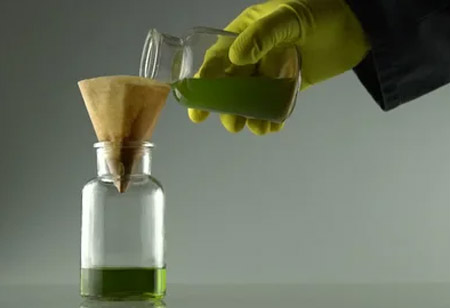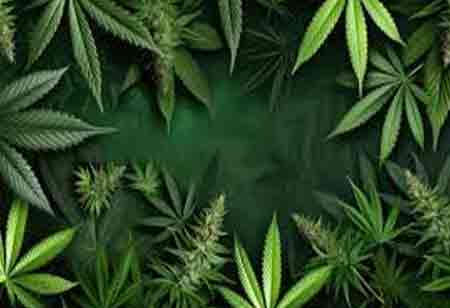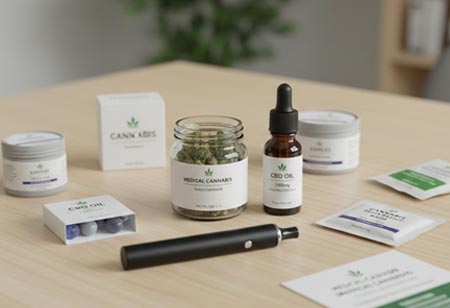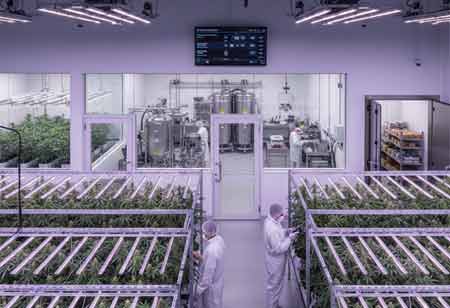Thank you for Subscribing to Cannabis Business Insights Weekly Brief
Enhancing Cannabis Alcohol Extraction Efficiency
Cannabis extraction can be carried out using various methods such as solvent-free, alcohol, CO2, butane, and propane techniques. This flexibility allows both individuals and machines to perform the extraction, enabling a wider range of producers to participate.

By
Cannabis Business Insights | Monday, October 27, 2025
Stay ahead of the industry with exclusive feature stories on the top companies, expert insights and the latest news delivered straight to your inbox. Subscribe today.
FREMONT, CA: The main goal of cannabis extraction is to deliver high-quality products to consumers. With various extraction methods at their disposal, producers can optimize the potency and quality of the final product.
Cannabis extraction can be performed by individuals or through the use of machinery designed to process larger batches of cannabis or hemp. These extraction techniques aim to isolate the diverse compounds within the plant, enhancing the overall quality for consumers. With over 500 different chemicals present in cannabis, these methods are predominantly employed to concentrate the most sought-after compounds.
Common Methods of Cannabis Extraction
Solvent-Free Extraction
One of the most recognized products utilizing solvent-free extraction is hash. This is produced by agitating cannabis buds, resulting in a powdery substance that can be retained as hash or transformed into products such as rosin.
Another solvent-free method involves producing cannabis oil. In this process, biomass is exposed to a heated air stream, vaporizing the material. The vapor is then shock-cooled, forming a non-coalescing fog that is collected and condensed into liquid form, yielding a full-spectrum concentrate. This approach is notably energy-efficient, consuming only 1/14th of the energy required for CO2 extraction. Cannabis Alcohol Extraction
Alcohol, particularly ethanol, serves as a solvent in certain extraction methods, allowing cannabis to be soaked and subsequently filtered. Alcohol extraction works via evaporation, effectively removing undesirable components, such as chlorophyll, which can negatively affect the product’s flavor.
Maintaining precise temperature control during this process is crucial, as improper management can diminish the extraction's potency. Additionally, stringent safety precautions are necessary due to the flammable nature of alcohol and ethanol, which pose risks to personnel if not handled correctly. Fortunately, this method does not introduce toxic chemical residues into the final extract. CO2 Cannabis Extraction
In CO2 extraction, carbon dioxide is employed to remove cannabis components. By manipulating pressure and temperature, CO2 can transition between liquid and gas states, allowing for tailored extraction of specific compounds. The duration of the extraction process is critical, as different compounds concentrate at varying rates.
Using a condenser allows for the recycling of CO2, minimizing waste while enhancing production yields and resource efficiency. Cannabis Butane and Propane Extraction
Butane hash oil represents one of the most potent cannabis products available. This method typically involves a vacuum machine that converts butane into vapor, facilitating its removal from the cannabis material. This technique is also utilized to create shatter containing CBD and various terpenes.
Given butane's highly flammable nature, strict temperature management and safety precautions are imperative during this process. Additionally, machines equipped with circulators can remove and recycle butane, enabling the production of flavorful extracts with high terpene content. Cannabis extraction offers consumers some of the highest-quality products available. By employing various techniques and machinery, producers can customize their cannabis offerings, enhancing potency and overall quality. Different solvents can also impact the extraction process, each contributing unique characteristics to the final product. While some extraction methods require advanced machinery and expertise, there are also techniques accessible to the average individual, making it possible for a broader range of producers to engage in cannabis extraction.
One of the most recognized products utilizing solvent-free extraction is hash. This is produced by agitating cannabis buds, resulting in a powdery substance that can be retained as hash or transformed into products such as rosin.
Another solvent-free method involves producing cannabis oil. In this process, biomass is exposed to a heated air stream, vaporizing the material. The vapor is then shock-cooled, forming a non-coalescing fog that is collected and condensed into liquid form, yielding a full-spectrum concentrate. This approach is notably energy-efficient, consuming only 1/14th of the energy required for CO2 extraction. Cannabis Alcohol Extraction
Alcohol, particularly ethanol, serves as a solvent in certain extraction methods, allowing cannabis to be soaked and subsequently filtered. Alcohol extraction works via evaporation, effectively removing undesirable components, such as chlorophyll, which can negatively affect the product’s flavor.
Maintaining precise temperature control during this process is crucial, as improper management can diminish the extraction's potency. Additionally, stringent safety precautions are necessary due to the flammable nature of alcohol and ethanol, which pose risks to personnel if not handled correctly. Fortunately, this method does not introduce toxic chemical residues into the final extract. CO2 Cannabis Extraction
In CO2 extraction, carbon dioxide is employed to remove cannabis components. By manipulating pressure and temperature, CO2 can transition between liquid and gas states, allowing for tailored extraction of specific compounds. The duration of the extraction process is critical, as different compounds concentrate at varying rates.
Using a condenser allows for the recycling of CO2, minimizing waste while enhancing production yields and resource efficiency. Cannabis Butane and Propane Extraction
Butane hash oil represents one of the most potent cannabis products available. This method typically involves a vacuum machine that converts butane into vapor, facilitating its removal from the cannabis material. This technique is also utilized to create shatter containing CBD and various terpenes.
Given butane's highly flammable nature, strict temperature management and safety precautions are imperative during this process. Additionally, machines equipped with circulators can remove and recycle butane, enabling the production of flavorful extracts with high terpene content. Cannabis extraction offers consumers some of the highest-quality products available. By employing various techniques and machinery, producers can customize their cannabis offerings, enhancing potency and overall quality. Different solvents can also impact the extraction process, each contributing unique characteristics to the final product. While some extraction methods require advanced machinery and expertise, there are also techniques accessible to the average individual, making it possible for a broader range of producers to engage in cannabis extraction.






